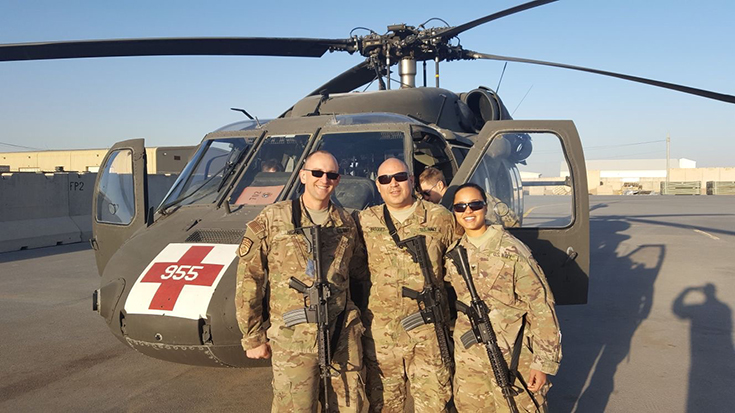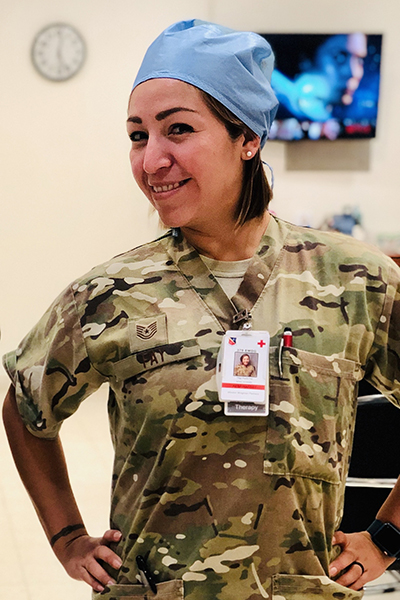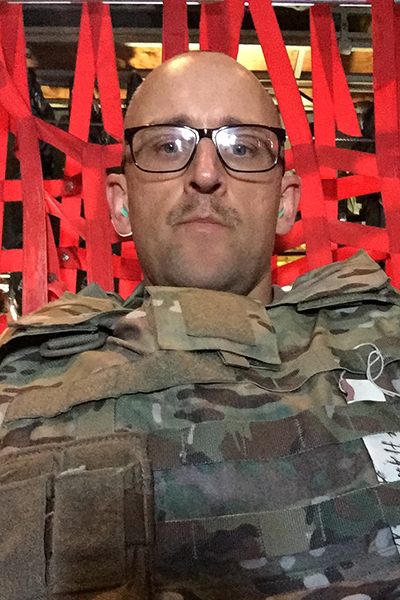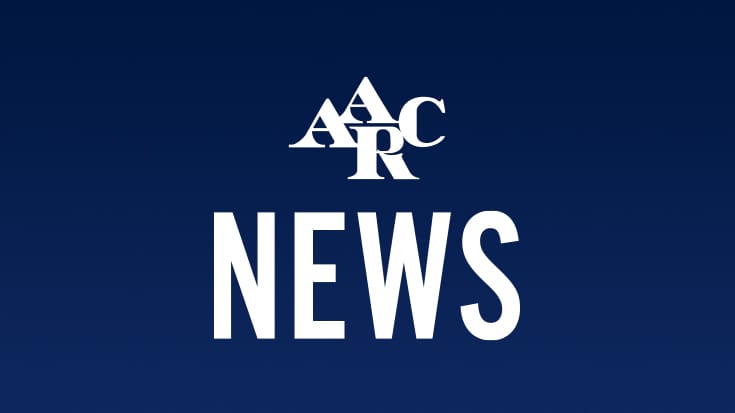
In times of war and times of peace, members of the U.S. military depend on other military members to care for their medical needs. Respiratory therapists serving in the armed forces play an important role in that process. As we celebrate Veterans Day 2019, two AARC members share their experiences.
Fascinated by the heart and lungs

Tech. Sgt. Paola B. Fay has served in the Air Force for the past 11 years and she’s been an RT the entire time.
“I actually waited eight months to leave for basic training because I was waiting for a new class to open up during the Delayed Entry Program,” she explained. “The heart and lungs just fascinated me.”
Tech. Sgt. Fay explains that the Air Force trains therapists to serve in the role of cardiopulmonary technician, so her training included both fields. Over the years, she’s served in several areas, but most recently just returned from a deployment to Qatar, where she was assigned to the ICU and worked alongside the surgery team.
During the deployment, she saw everything from postop patients recovering from battle injuries to routine and urgent care cases.
Today she’s working as a therapist at Joint Base Langley-Eustis in Virginia.
“The mission in the military varies from station to station and we may not have the patient acuity a civilian hospital may have, but we stick together as a team and we are flexible and resilient,” Tech. Sgt. Fay said. “Being an RT is extremely awesome by itself, though we just add the hard-core portion of it.”
Inspired by his son

As a corpsman in the U.S. Navy, HM2 Aaron Hamblin serves as the leading petty officer for respiratory therapy at the CAPT James A. Lovell Federal Health Care Center in Great Lakes, IL.
“I have been in the military for 10 years, 7.5 of those as an RT,” HM2 Hamblin said. “The reason I became an RT was because they were the ones that really made the difference in my son’s life when we almost lost him as an infant to a really bad case of RSV.”
Hamblin says his son will turn 10 in December and is loving life, thanks in large part to the RTs who helped to care for him.
He loves being able to do the same for others.
“The thing I like most about my job is the rush of emergencies, and being a vital role in saving someone’s life,” he said. “Also, to have days where you get to do patient education or pulmonary function tests or anything in-between.”
He often takes his skills out into the civilian community as well, both to gain additional experience and earn a little extra money for his family. “I have worked in long term care facilities and trauma hospitals,” HM2 Hamblin said.
His most exciting deployment, however, was to Kandahar, Afghanistan, where he was one of just two RTs assisting with more than 150 emergency cases, including 30 that required emergency intubations and 15 that involved bronchoscopies. He also assisted with transport and transfer to the flight teams.
“We saw everything from traumatic amputations and severe burns to skin degloving and much more,” HM2 Hamblin said. He believes those experiences have significantly broadened his horizons as an RT.
“Being a military RT out in the field we fall under different codes, and with the assistance of our doctors we are exposed to things that we get to practice and learn that we may never get a chance to as a civilian,” he said.
Join our Military Community
These two military members of the AARC represent many others who are serving our country every day. The AARC supports military members through a special Military Community on AARConnect where military members, veterans of service, and those who support the military can come together to discuss issues of concern.
Email newsroom@aarc.org with questions or comments, we’d love to hear from you.














